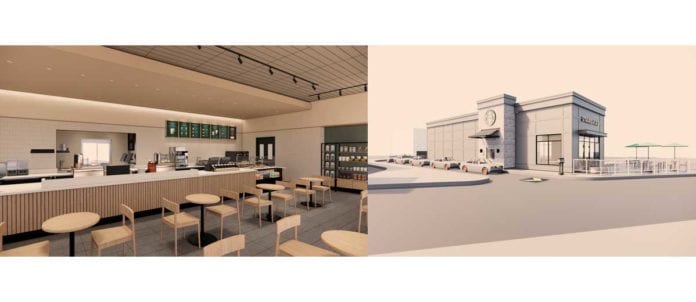TORONTO — Starbucks Canada is set to open a first-of-its-kind, sustainably constructed Starbucks drive-thru café in Canada.
Designed, manufactured and constructed by Vancouver-based green building company Nexii Building Solutions, the Starbucks drive-thru café — set to open in early 2021 in Abbotsford, B.C. — represents a significant step forward in the company’s aspirations to operate more eco-friendly stores, a key component of the company’s global sustainability strategy. Starbucks has set ambitious sustainability targets to cut its carbon, water and waste footprints in half by 2030.
“Buildings and construction can have a substantial impact on Canada’s environmental goals,” says Catherine Anderson, vice-president of Store Development at Starbucks Canada. “Working with like-minded innovators like Nexii, we are excited to lead the industry in modelling the benefits of green construction and share what we learn with others to help action meaningful, global change.”
Starbucks has been a global leader in designing its cafés to achieve LEED- (Leadership in Energy and Environmental Design) certification standards since 2005, ensuring energy and water efficiencies and using sustainable building materials.
As a new-build construction project, the Starbucks Abbotsford drive-thru café was assembled in just six days — the result of Nexii’s unique precision-manufacturing process, whereby panels for the store’s roof and walls were designed and manufactured offsite. Through optimized manufacturing and simplified assembly, this building process reduces construction waste comparatively to industry practices.
“All aspects of the Nexii system — from the products we create to the way we assemble our buildings — are designed with sustainability at the core, so that we can create affordable, green buildings,” says Stephen Sidwell, CEO of Nexii.
The Nexii panels create a thermally efficient, airtight envelope, so the Starbucks building will require less energy to heat and cool compared to standard construction builds, greatly improving energy efficiency over its building lifecycle, lowering operating costs.


















